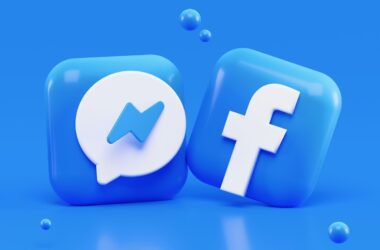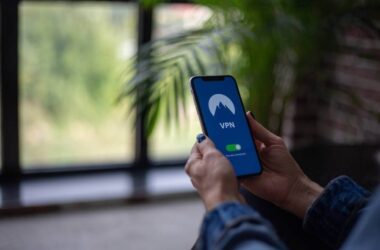While most iPhones today have solid GPS and fitness tracking, a great hiking app does a lot more. It can help you find trails that match your skill level, download offline maps for when there’s no signal, monitor elevation changes, and even warn you of weather or trail closures. For hikers who love getting out in nature, these apps turn your phone into one of the best tools you can bring along besides your boots and water bottle.
There’s nothing like heading out on the trail, whether it’s a casual nature walk or a full-day mountain hike. With the right Hiking Apps for iPhone, you can plan better routes, stay safe, track your progress, and discover new trails you might never have found on your own.
In this guide, we’ve gathered the best Hiking Apps for iPhone, apps that work great for casual walkers, weekend adventurers, or serious backpackers. Whether you’re planning a simple afternoon hike or a multi-day trip in the wilderness, these apps will help you hike smarter and safer.
Before you lace up and hit the trail, take a look; these apps might just help you discover your new favorite route.
15 Best Hiking Apps for iPhone and iPad | Let’s Trek
| App Name | Download Link |
|---|---|
| AllTrails | Download Now |
| Gaia GPS | Download Now |
| Komoot | Download Now |
| onX Backcountry | Download Now |
| FarOut | Download Now |
| Spyglass | Download Now |
| Cairn | Download Now |
| Hiking Project | Download Now |
| Outdooractive | Download Now |
| PeakVisor | Download Now |
| Topo Maps+ | Download Now |
| Relive | Download Now |
| Maps 3D PRO | Download Now |
| Avenza Maps | Download Now |
| Apple Maps | Download Now |
1. AllTrails
AllTrails is easily one of the most popular Hiking Apps for iPhone. It’s packed with detailed trail maps, reviews, and photos, perfect for discovering new hikes and planning your outings. Whether you’re looking for an easy stroll, a dog-friendly path, or a challenging summit, AllTrails helps you find trails that match your interests and fitness level.
The app includes over 400,000 trails worldwide, with filters for length, elevation gain, difficulty, and user ratings. Each trail listing often has community photos and tips, helpful for checking current conditions or seeing what views to expect. You can download maps for offline use, which is key when hiking in areas with little or no cell service.
While AllTrails works well with your iPhone’s GPS, it also pairs with the Apple Watch for tracking distance, pace, and elevation as you hike. The app syncs with Apple Health, so you can keep all your activity in one place.
What makes AllTrails one of the best Hiking Apps for iPhone is how community-driven it is. The reviews and photos from fellow hikers give you real insight into what to expect on the trail. The free version works well for casual users, while AllTrails+ unlocks offline maps, wrong-turn alerts, and more.
The Good
- Huge library of trails with detailed info
- Offline map downloads with AllTrails+
- Active community reviews and photos
The Bad
- Offline features require a paid subscription
- Maps may lack some fine-detail topographic info
Also Read: Best Yoga Apps for iPhone and iPad to Stay Flexible, Fit, and Calm
2. Gaia GPS
If you love exploring off the beaten path, Gaia GPS is one of the best Hiking Apps for iPhone. It’s known for its detailed topo maps, offline navigation, and route planning tools, perfect for serious hikers, backpackers, and outdoor enthusiasts.
With Gaia GPS, you can download high-resolution topo maps before your trip, so you’re never lost, even if there’s no signal. The app supports layering maps, like satellite views, public land boundaries, and weather overlays, so you can plan routes with full context. You can also record tracks, mark waypoints, and see live stats like elevation and distance.
One standout feature is the ability to customize and plan your hikes. You can draw routes directly on the map, set waypoints for key landmarks, and sync across devices. It also integrates well with Apple Watch and syncs with Apple Health.
Compared to other Hiking Apps for iPhone, Gaia GPS is geared toward those who venture deeper into the wilderness, where offline navigation and topo detail really matter. Casual hikers may find the interface more technical, but for anyone looking to level up their outdoor adventures, it’s an excellent choice.
The Good
- Industry-leading topo and offline maps
- Advanced planning and layering tools
- Works great for backcountry navigation
The Bad
- Interface has a learning curve
- Many advanced features require a premium subscription
3. Komoot
Komoot is one of the best Hiking Apps for iPhone if you love planning your hikes in detail before you hit the trail. It combines topographic maps with route planning and voice navigation, making it ideal for both beginners and experienced hikers.
The app lets you build custom routes by selecting start and end points, adding waypoints, and previewing elevation changes. It gives you distance, estimated time, and surface type (paved, dirt, gravel) and highlights key sights along the way. You can also browse community-recommended hikes nearby and download maps for offline use.
One thing that makes Komoot stand out among Hiking Apps for iPhone is its voice navigation. Once you start a hike, the app provides turn-by-turn audio guidance so you can keep your phone tucked away and enjoy the trail without missing a turn. It also syncs with Apple Watch and Apple Health.
For hikers who love to explore new areas or plan trips abroad, Komoot is especially useful because it covers trails across the globe. You can buy map regions as needed or subscribe to unlock worldwide maps.
The Good
- Custom route planning with turn-by-turn voice guidance
- Detailed surface and elevation info
- Offline maps and Apple Watch support
The Bad
- Offline maps require purchasing regions or a subscription
- The community trail database is smaller in some regions
Also Read: Your iPhone Just Became Your Best Cycling Partner | Here’s How
4. onX Backcountry
onX Backcountry is one of the top Hiking Apps for iPhone for those who love venturing into remote areas. Originally built for backcountry skiers, it now offers excellent tools for hikers and backpackers who need high-detail offline maps and safety features.
With onX Backcountry, you can download highly detailed topo maps, satellite imagery, and 3D maps to use offline. The app includes trail data, elevation profiles, weather forecasts, and land ownership boundaries, which is great for staying aware of where you are, even when far from cell service. You can track your hike live, drop waypoints, and even use the “Route Builder” tool to plan multi-day adventures.
One standout feature is Trail Mode, which highlights recommended trails and conditions based on crowd-sourced reports and verified data. The app also supports offline snow and avalanche maps for winter hikers and alpine explorers.
What makes onX Backcountry one of the best Hiking Apps for iPhone is its strong safety focus. You can see cell coverage zones, track where you’ve been, and use offline tools to stay found even in wilderness areas.
The Good
- Excellent offline topo, satellite, and 3D maps
- Great safety features for remote hikes
- Includes weather, cell coverage, and land ownership info
The Bad
- Premium subscription required for full feature set
- More geared toward advanced and backcountry hikers
5. FarOut (formerly Guthook Guides)
FarOut is one of the most trusted Hiking Apps for iPhone for thru-hikers and long-distance trail explorers. Originally designed for iconic U.S. trails like the Appalachian Trail and Pacific Crest Trail, it now offers guides for trails around the world, perfect for multi-day hikes and big adventures.
What sets FarOut apart is its depth of information. Each trail guide includes highly detailed offline maps, waypoint info (water sources, campsites, resupply points), elevation profiles, and user comments updated in real-time. The community input helps hikers stay aware of trail conditions, closures, and the latest tips, especially valuable on long trails.
Even when you’re off the grid, FarOut lets you track your progress on the map using your iPhone’s GPS. The app is built to work entirely offline, which is crucial for wilderness hikes where there’s no cell signal for days at a time.
Among Hiking Apps for iPhone, FarOut is the go-to choice for thru-hikers, backpackers, and anyone taking on longer trails. While casual hikers may not need this level of detail, it’s invaluable for serious adventures.
The Good
- Extremely detailed long-distance trail guides
- Offline maps with elevation and waypoint data
- Active community input for real-time trail info
The Bad
- Focused mainly on major hiking trails, not casual day hikes
- Guides must be purchased individually
Also Read: The Best Running Apps for iPhone and iPad
6. Spyglass
Spyglass is one of the most unique Hiking Apps for iPhone; it’s part compass, part GPS, part augmented reality navigator. If you enjoy bushwhacking, off-trail navigation, or hiking in areas with few marked paths, this app can be incredibly helpful.
The app uses your iPhone’s GPS, gyroscope, and camera to overlay navigation data onto your screen. You can mark waypoints, follow bearings, and measure distances, all through an AR heads-up display. It also functions as a digital compass, clinometer, rangefinder, and offline map viewer. The app doesn’t rely on a data connection, making it great for remote hikes.
What makes Spyglass stand out among Hiking Apps for iPhone is its advanced nav tools. If you’re navigating across open wilderness and alpine areas or need precise direction off the beaten path, it helps bridge the gap between a traditional compass and a GPS unit. You can also import GPX or KML routes and save custom maps for offline use.
That said, Spyglass is more for advanced users, hikers who understand basic navigation and want more control. For casual trail walkers, a simpler app like AllTrails may be easier to use.
The Good
- Powerful navigation tools with AR display
- Great for off-trail and advanced hikes
- Works entirely offline
The Bad
- The interface is more technical than casual apps
- Best for experienced hikers with some nav knowledge
7. Cairn
Cairn is one of the most safety-focused Hiking Apps for iPhone. It helps you stay connected, share your hiking plans with trusted contacts, and find where you’ll have cell coverage, even in remote areas.
Before you start your hike, you can use Cairn to plan your route and download offline maps. The app then shows you spots along the trail where other hikers have found cell signals, which is very helpful if you ever need to call for help. You can also set estimated return times and choose contacts to notify if you don’t check in on time.
While you’re on the trail, Cairn records your hike and progress. Your selected contacts can follow along in real-time (if you have service) or will be notified if you’re overdue. The app also provides elevation profiles, estimated completion times, and battery-efficient tracking.
What makes Cairn one of the best Hiking Apps for iPhone is how much peace of mind it offers, both for hikers and loved ones at home. It’s especially useful for solo hikers or anyone venturing into unfamiliar areas.
The Good
- Share live tracking and check-ins with contacts
- Shows where the cell signal is available on the trail
- Offline maps and safety-focused planning tools
The Bad
- Subscription required for full offline and tracking features
- Less focus on trail discovery, which is best used alongside other apps
Also Read: The Best Strength Training Apps for iPhone and iPad
8. Hiking Project
Hiking Project is one of the best free Hiking Apps for iPhone, offering detailed trail maps and info for thousands of hikes without requiring a subscription. Created by the team at REI, it’s built with the outdoor community in mind and is a great resource for casual and experienced hikers alike.
The app covers trails across the U.S. and some international locations. Each trail listing includes a full GPS map, elevation profile, route description, user ratings, and tips on features like waterfalls, scenic views, and wildlife. You can download trails for offline use, which is key when you’re hiking in areas without cell service.
One thing that makes Hiking Project stand out is that it’s completely free to use; there are no paid tiers or in-app purchases. The data is also updated by both staff and the hiking community, so you get reliable, up-to-date trail info. It integrates with Apple Health and GPS to track your hike progress in real-time.
Compared to other Hiking Apps for iPhone, Hiking Project is excellent for hikers who want solid maps and trail data without committing to a paid subscription. It’s a great way to explore new trails and build confidence before heading out.
The Good
- Free trail maps with GPS and offline access
- Detailed elevation profiles and trail descriptions
- No subscription required
The Bad
- U.S.-focused, limited international trails
- Smaller community compared to apps like AllTrails
9. Outdooractive
Outdooractive is a highly versatile Hiking App for iPhone that covers hiking, trekking, biking, climbing, and even ski touring. It’s packed with topographic maps, route planning tools, and GPS tracking features, making it a great all-in-one option for outdoor adventurers.
You can explore thousands of hiking trails worldwide, with detailed info on length, difficulty, elevation gain, and terrain. The app also includes weather forecasts, nearby accommodations, and points of interest. You can plan your own routes using its map editor or follow recommended trails from the Outdooractive community.
One standout feature is its excellent offline map support. You can download high-detail topographic and satellite maps to use when off the grid. It also syncs with Apple Health and Apple Watch for easy tracking. The app supports GPX import/export, too, so you can bring in routes from other platforms.
What makes Outdooractive one of the best Hiking Apps for iPhone is how flexible it is, whether you’re going on a quick day hike or planning a long-distance trek. It’s also especially strong for European trails, which many U.S.-focused apps don’t cover well.
The Good
- Global trail database with great offline maps
- Excellent for both day hikes and long treks
- Strong European trail coverage
The Bad
- Some advanced features behind a subscription paywall
- The interface can feel a little cluttered for casual users
Also Read: The Best Personal Trainer Apps for iPhone and iPad
10. PeakVisor
If you’ve ever looked out at a mountain range and wondered, “What peak is that?” PeakVisor is one of the most fun and informative Hiking Apps for iPhone. It uses augmented reality (AR) to identify mountain peaks around you in real-time simply by pointing your iPhone’s camera at the landscape.
The app recognizes over one million peaks worldwide, showing names, elevations, and distances for each one. It also provides high-detail 3D maps with terrain and trails so you can plan hikes and explore new areas visually. You can download maps for offline use, which is great for remote hikes.
PeakVisor isn’t just for sightseeing; it also works as a GPS tracker, helping you record your hikes, see elevation profiles, and mark waypoints. It integrates with Apple Health to log your activity and pairs with Apple Watch as well.
Among Hiking Apps for iPhone, PeakVisor stands out for its AR experience and educational value. It’s perfect for hikers who love learning about the natural world and want to deepen their connection with the places they explore.
The Good
- Augmented reality peak identification
- Offline 3D maps with trails and terrain
- A great educational tool for hikers
The Bad
- Limited turn-by-turn navigation features
- Some features require a premium subscription
11. Topo Maps+
If you’re serious about navigation and love using detailed topo maps, Topo Maps+ is one of the best Hiking Apps for iPhone. It offers a wide selection of high-quality maps, USGS topo maps, satellite imagery, public land boundaries, and more, all of which can be downloaded for offline use.
Topo Maps+ is built for hikers, backpackers, and hunters who need precise map detail when venturing into remote areas. You can plan your routes, measure distances, mark waypoints, and track your progress with GPS. The app also lets you layer different maps so you can see trails, land ownership, and topography at a glance.
A standout feature is the ability to print maps at home, which is handy for those who like carrying a paper backup. You can also import and export GPX files to share routes between devices or with friends. It syncs with Apple Watch for on-wrist navigation and with Apple Health for activity tracking.
Compared to other Hiking Apps for iPhone, Topo Maps+ leans toward more advanced users. If you’re a casual hiker looking for trail discovery, apps like AllTrails may be simpler. But if you’re navigating off-grid or exploring wild areas, Topo Maps+ is a powerhouse.
The Good
- Highly detailed offline topo maps
- Map layering and printable maps
- Works great for advanced navigation
The Bad
- Interface geared toward experienced users
- Best features require a premium subscription
Also Read: The Best Gym Workout Tracker Apps for iPhone and iPad
12. Relive
Relive is one of the most visual and fun Hiking Apps for iPhone. It focuses on turning your hikes into interactive 3D videos so you can relive and share your outdoor adventures with friends and family.
The app records your hike using GPS and overlays it onto a 3D map. After your hike, Relive automatically generates a short video that traces your route, marks key points (like photos you took), and highlights your stats, distance, elevation gain, and pace. You can add captions, music, and scenic photos to make your story even more personal.
Relive works well for casual hikers who want to document their trips and share them on social media. It syncs with Apple Health and can pull activity data from other apps like Strava or Garmin Connect. You can also use an Apple Watch to track your hike directly.
Among Hiking Apps for iPhone, Relive isn’t the most advanced for navigation, but it excels as a storytelling tool. If you love capturing your adventures and inspiring others to get outside, it’s a great companion.
The Good
- Creates interactive 3D videos of your hikes
- Easy to share on social media
- Syncs with Apple Health and major fitness apps
The Bad
- Limited navigation and route planning features
- Some video editing features require a subscription
13. Maps 3D PRO
Maps 3D PRO is one of the best Hiking Apps for iPhone if you’re a visual learner or love exploring terrain in detail before heading out. The app displays trails and topographic maps in fully interactive 3D, giving you a clear sense of elevation, landscape, and difficulty before your hike.
With Maps 3D PRO, you can plan your hikes by drawing routes directly on the map. The app automatically calculates distance, elevation gain, and estimated time. Once you’re on the trail, it tracks your progress via GPS, even when offline. You can also mark waypoints, import GPX tracks, and view satellite images.
One feature hikers love is how intuitive the 3D view is; being able to rotate, zoom, and tilt the map gives you a much better sense of what to expect than flat maps alone. It helps with navigation, too, especially when hiking in unfamiliar areas.
Compared to other Hiking Apps for iPhone, Maps 3D PRO offers an excellent balance of detail and ease of use. It’s great for both planning at home and navigating on the trail. The app is a one-time purchase, so there’s no subscription required.
The Good
- Detailed 3D topographic maps
- Offline GPS tracking and planning tools
- No subscription, one-time purchase
The Bad
- Smaller trail discovery database compared to AllTrails
- No live community features
Also Read: The Best Home Workout Apps for iPhone and iPad
14. Avenza Maps
Avenza Maps is a powerful offline map viewer that turns your iPhone into a detailed navigation tool, perfect for hiking, backpacking, and backcountry exploration. It works a little differently from other Hiking Apps for iPhone: instead of a built-in trail database, it allows you to download official maps from national parks, public lands, and trusted publishers.
Through the app’s map store, you can access thousands of free and paid maps, USGS topo maps, park trail maps, and even specialty maps for conservation areas. Once downloaded, these maps work offline and allow you to track your location via GPS, measure distances, add waypoints, and record tracks.
Avenza Maps is ideal if you’re hiking in places where trail apps like AllTrails don’t cover all the details or if you want to use the exact map provided by the park or forest service. It’s also popular with field researchers and backcountry hikers.
Among Hiking Apps for iPhone, Avenza Maps offers unmatched flexibility for map choice. It’s not as focused on casual trail discovery, but for navigation in wild areas, it’s one of the most trusted options.
The Good
- Works with official, professional-quality maps
- Full offline GPS tracking
- Huge variety of maps in the store
The Bad
- No community trail reviews or discovery features
- Many high-quality maps are paid downloads
15. Apple Maps (Offline Maps in iOS 17 and newer)
With iOS 17 and newer, Apple Maps now supports offline maps, making it a surprisingly handy Hiking App for iPhone, especially for casual hikers who want basic navigation without downloading extra apps.
You can now download map areas for offline use directly within Apple Maps. This lets you view detailed road and trail maps, search for points of interest, and see your live GPS location even without cell service. The app also supports hiking trails in many parks and natural areas, displaying them clearly with elevation contours and trail markers.
While Apple Maps doesn’t offer community reviews or deep trail databases of apps like AllTrails, it’s great for light hiking, nature walks, or spur-of-the-moment outdoor plans. Since it’s built into iOS, you don’t have to worry about compatibility, and it works seamlessly with Apple Watch.
For iPhone users who want a simple option to get started with hiking, Apple Maps is now a solid choice. It’s not as feature-rich for serious hikers, but for everyday use, it’s fast, familiar, and free.
The Good
- Built-in offline maps (iOS 17+)
- Shows many hiking trails with elevation
- Free and easy to use with no setup
The Bad
- Limited trail planning and discovery features
- Lacks in-depth offline topo detail compared to dedicated apps
Also Read: The Best HIIT Workout Apps for iPhone and iPad
Confused? Let’s Compare the Best Hiking Apps for iPhone
| App Name | Best For | Offline Maps | Trail Discovery | Subscription Required |
|---|---|---|---|---|
| AllTrails | Finding popular trails and community reviews | Yes (AllTrails+) | Excellent | Yes (for offline + extras) |
| Gaia GPS | Advanced topo maps and backcountry navigation | Yes | Good | Yes |
| Komoot | Custom route planning with voice navigation | Yes | Good | Yes (for full access) |
| onX Backcountry | Safety features for remote wilderness hikes | Yes | Moderate | Yes |
| FarOut | Long-distance and thru-hiking | Yes | Focused on long trails | Pay per guide |
| Spyglass | AR compass and off-trail navigation | Yes | No | One-time purchase |
| Cairn | Safety tracking and check-in notifications | Yes | No | Yes |
| Hiking Project | Free trail maps with community data | Yes | Good | Free |
| Outdooractive | Global trail database and flexible trip planning | Yes | Good | Yes |
| PeakVisor | Identifying peaks with AR + terrain maps | Yes | No | Yes |
| Topo Maps+ | Detailed topo maps for offline navigation | Yes | Limited | Yes |
| Relive | Creating 3D video stories of hikes | No | No | Optional |
| Maps 3D PRO | 3D topo planning with offline tracking | Yes | Limited | One-time purchase |
| Avenza Maps | Using official park and public land maps | Yes | No | Pay per map |
| Apple Maps | Built-in offline trail maps (iOS 17+) | Yes | Basic | Free |
Also Read: Beats PowerBeats Pro Review | Earbuds for Fitness Freaks
Frequently Asked Questions [FAQs]
Yes, nearly all of these Hiking Apps for iPhone support offline maps, which is essential when hiking in areas without cell service. Apps like Gaia GPS, onX Backcountry, and Topo Maps+ are especially strong in this area.
Many apps offer free basic features, but offline maps and advanced tools usually require a subscription or one-time purchase. If you hike often or go into remote areas, paid plans are usually worth it.
Absolutely. Most of these apps track your pace, distance, and elevation, perfect for trail running as well as hiking.
They’re great tools, but you should always carry a backup like a paper map or a traditional compass, especially for backcountry hikes.
Using GPS and offline maps can use more battery than casual phone use. Always start with a full charge and consider bringing a power bank for long hikes.
No, but apps that support the Apple Watch give you more flexibility to track stats or follow routes without pulling out your phone.
Several apps, like AllTrails, Gaia GPS, and Komoot, let you plan on a desktop and sync to an iPhone.
The Hiking Project is excellent and free. AllTrails free version is also great for casual hikers.
Before You Leave
Get Our Prime Content Delivered to your Inbox for Free!! Join the Ever-Growing Community… Right Now.
Give this article a quick share,
Wrapping up: The Best Hiking Apps for iPhone and iPad
With the right Hiking Apps for iPhone, your next outdoor adventure can be safer, more fun, and better planned. Whether you’re a weekend trail walker or a hardcore backcountry explorer, these apps bring powerful tools right to your pocket, helping you discover new trails, stay on track, and share your hikes with others.
If you’re looking for easy trail discovery, AllTrails and Hiking Project are great places to start. For serious offline navigation, Gaia GPS, Topo Maps+, and onX Backcountry offer excellent topo maps and backcountry features. And if you like documenting your adventures visually, Relive or PeakVisor brings something extra to the experience.
No matter your hiking style or experience level, there’s an app here to fit your needs. Just remember, apps are tools, not replacements for good planning. Always pack the essentials and know your limits.
With a little prep (and a good app or two), your iPhone can be one of your best hiking companions. Here’s to finding new trails, reaching new heights, and making every hike a great one.
If you like what you read, give us a quick share on your social media platform and give us all the love and support. You can also connect with us on our Telegram Channel, Facebook Page, Reddit Community, and X to never miss out on tech updates.







